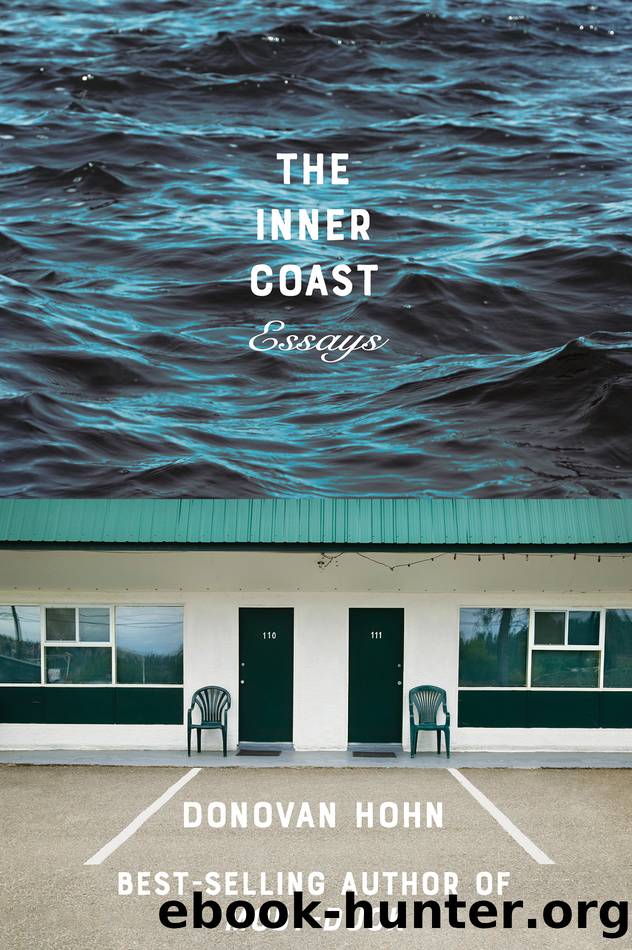The Inner Coast by Donovan Hohn

Author:Donovan Hohn
Language: eng
Format: epub
Publisher: W. W. Norton & Company
Published: 2020-04-13T00:00:00+00:00
That winter and spring, whenever Edwards went to Michigan, television cameras tended to follow. One morning, a team sent by RT, the Russian news network, trailed him to an elementary school—not in Flint but just outside it, in the comparatively affluent, predominantly white suburb of Grand Blanc. Joining Edwards on his classroom visit was Mona Hanna-Attisha, a pediatrician at Hurley Medical Center in Flint. Like many people in Michigan, she first heard of Edwards when he stepped before the television cameras in the summer of 2015. At the time, she was working on a study of her own, an analysis of pediatric blood data that would confirm what the Virginia Tech water study had implied—that blood-lead levels in Flint had shot up after the city seceded from Detroit’s water system. Edwards had identified the cause, Hanna-Attisha the effect. She wasn’t sure why state agencies had missed the blood-lead increase she had found. Trying to explain their failure, their collective blindness, she mentioned an aphorism she learned in medical school: “The eyes don’t see what the mind doesn’t know.”
In a second-floor classroom, the pair sat in tiny red chairs, Edwards in an ill-fitting suit, Hanna-Attisha in an ankle-length parka, drinking cocoa from mugs and taking questions from small interrogators—the fourth-grade version of a congressional hearing. Edwards testified that something “governments don’t do very well is fix the problems they create.”
“Do you blame the government for what happened?” a boy in the front row asked.
“Yes, I do,” Edwards said. “Did you pick up on that?”
Another child wanted to know what happens to officials who break the law.
Hanna-Attisha joked that they get a “timeout.”
Edwards liked this. “A really bad timeout!” he said. All the grown-ups laughed.
“And everyone gets fired!” the boy in front said.
“We can also have stronger laws and stronger rules,” Hanna-Attisha said once the laughter died down, “to prevent this from happening in other cities.”
Grand Blanc and Flint have a tangled history. A half-century ago, during the days of white flight, General Motors executives pushed to combine suburbs and city into a single metropolis—New Flint—with shared government services and a shared tax base. In 1958, opponents in the suburbs blocked the plan. People in parts of Flint now have a life expectancy fifteen years lower than those in some neighboring suburbs, and even before the water crisis, children in Flint had higher blood-lead levels than their suburban counterparts. “Our Flint kids have every obstacle to success,” Hanna-Attisha told me back at her office. “We have a forty-two percent poverty rate here; it’s about 16 percent in the state. We have one of the highest crime rates. We don’t have full-service grocery stores.”
Flint’s plight, in other words, predated the water crisis and would outlast it. At the time of Edwards’s classroom visit, four months after Flint rejoined Detroit’s water system, Edwards’s research team and the citizen scientists who volunteered to assist it were preparing to resample the same 271 taps that Virginia Tech had originally sampled. The results would reveal how far lead levels had fallen.
Download
This site does not store any files on its server. We only index and link to content provided by other sites. Please contact the content providers to delete copyright contents if any and email us, we'll remove relevant links or contents immediately.
| Diaries & Journals | Essays |
| Letters | Speeches |
The Rules Do Not Apply by Ariel Levy(4910)
Bluets by Maggie Nelson(4512)
Too Much and Not the Mood by Durga Chew-Bose(4302)
Pre-Suasion: A Revolutionary Way to Influence and Persuade by Robert Cialdini(4184)
The Motorcycle Diaries by Ernesto Che Guevara(4051)
Walking by Henry David Thoreau(3923)
Schaum's Quick Guide to Writing Great Short Stories by Margaret Lucke(3345)
What If This Were Enough? by Heather Havrilesky(3287)
The Daily Stoic by Holiday Ryan & Hanselman Stephen(3264)
The Day I Stopped Drinking Milk by Sudha Murty(3176)
The Social Psychology of Inequality by Unknown(2987)
Why I Write by George Orwell(2913)
Letters From a Stoic by Seneca(2750)
A Short History of Nearly Everything by Bryson Bill(2659)
A Burst of Light by Audre Lorde(2568)
Insomniac City by Bill Hayes(2521)
Feel Free by Zadie Smith(2457)
Upstream by Mary Oliver(2369)
Miami by Joan Didion(2343)
